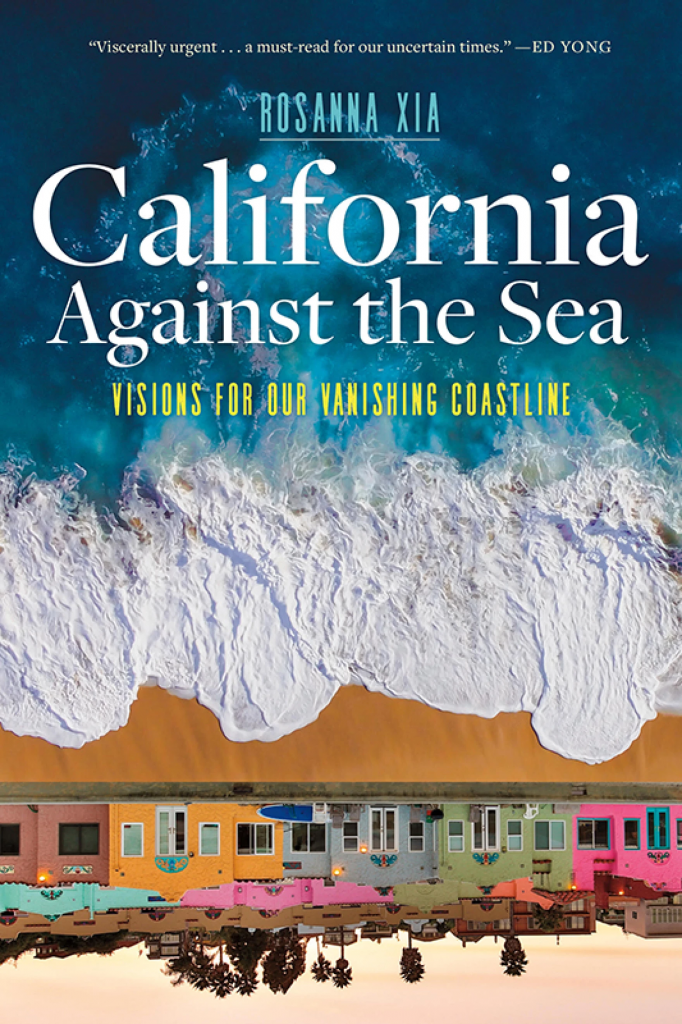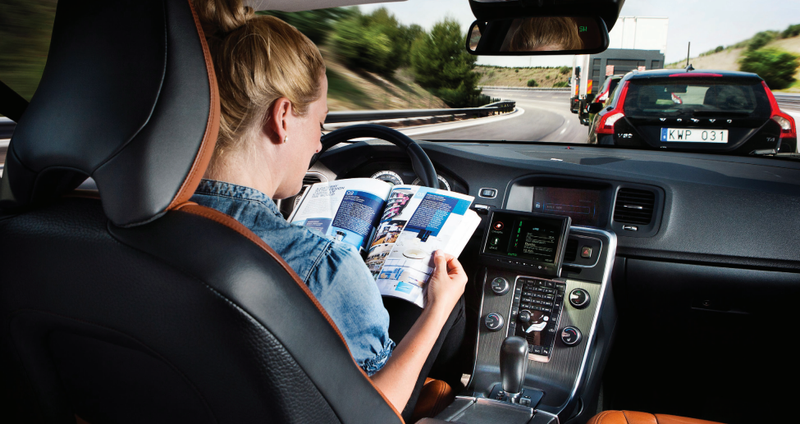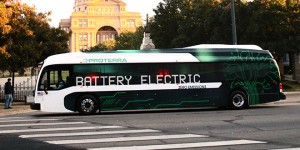Last week, the California Public Utilities Commission approved Waymo’s expansion of autonomous taxi service into communities south of San Francisco and in Los Angeles. Notably, the list of supporters included many organizations committed to enhancing safety for people who walk and bike, as well as disability advocates. That tells me they understand that robot drivers are much safer than human drivers.
In opposition were a number of city and county leaders in the expansion zones. That tells me that Waymo and its supporters need to do a lot more outreach with local government leaders to explain how their technology interacts with existing municipal services, from waste haulers to fire safety vehicles.
I spoke to KTVU news about the decision and its basis in California law:
Ultimately this expansion signals that a driverless future is already here and growing, with companies like Waymo believing that there’s a profit to be made from it. And despite some high-profile malfunctions, this future promises to be a safer one than the status quo.

On tonight’s State of the Bay, I’ll be speaking with Ricardo Cano, transportation reporter for the San Francisco Chronicle, about why state regulators have revoked permits for Cruise’s driverless autonomous vehicles. What are the implications for the autonomous vehicle industry here in California and beyond?
We’ll also hear from Los Angeles Times environmental reporter and author Rosanne Xia about her new book “California Against the Sea: Visions for Our Vanishing Coastline.”
And finally, we’ll sit down with Emily Pilloton-Lam, founder and executive director of the Berkeley non-profit Girls Garage.
Tune in at 91.7 FM in the San Francisco Bay Area or stream live at 6pm PT. What comments or questions do you have for our guests? Call 866-798-TALK to join the conversation!
I’ve heard people refer to self-driving cars as nothing more than a “George Jetsons” future that won’t really happen, or at least is decades away. But Tesla just brought that reality into the present.
Yesterday the automaker announced that all their new cars going forward will be equipped with the hardware for full automation. That includes:
Eight surround cameras provide 360 degrees of visibility around the car at up to 250 meters of range. Twelve updated ultrasonic sensors complement this vision, allowing for detection of both hard and soft objects at nearly twice the distance of the prior system. A forward-facing radar with enhanced processing provides additional data about the world on a redundant wavelength that is able to see through heavy rain, fog, dust and even the car ahead.
The software won’t be activated right away, and customers will have to pay to access both the hardware and the software. Still, the era of autonomy is now within reach, and it will require policy makers to get ahead of the curve to ensure it doesn’t increase traffic.
The no-regrets solutions? Encourage car-sharing instead of vehicle ownership, and start charging drivers for the miles they drive rather than taxing them based on fuel.
You can see Tesla’s promotional video here, showing the self-drive in action:
Self-driving cars are already here. Automakers and software companies are testing them like crazy, and people like Elon Musk predict that they could be the norm within a decade.
There’s a lot to like about the technology: it can potentially make car accidents a thing of the past, allow us to avoid the pain and stress of driving and instead do something productive with that time, and potentially free up a lot of space in our built environment that is presently dedicated to parking cars, particularly if we switch to on-demand type ownership models (the “Netflix of cars” approach).
But from an environmental perspective, there’s a huge potential downside. If driving is made easy, the technology could encourage more driving and therefore more traffic. Just imagine how convenient it might be for people to live far from their jobs if the commute can involve a robot driving for them while they nap or work on a laptop.
So what can policy makers do to head off this dystopia? The solutions look a lot like what we need to do to address traffic and sprawl anyway, even without the new technology taking over:
- First, we should stop investing in highway expansion projects and instead use available dollars to maintain existing roads and highways. We shouldn’t build more capacity to accommodate endless self-driving traffic, which will only encourage more sprawl and congestion.
- Second, we should build more alternatives to traffic, such as bus-only lanes, bike and pedestrian infrastructure, and rail transit. When we do build highways, we should include congestion pricing features, with the revenue reinvested in mobility options for that corridor. With viable and plentiful alternatives to driving, people won’t opt for self-driving cars as readily.
- Finally, and most importantly, we need to price transportation better to reflect the true costs. If people truly want to live far from job centers and use self-driving to navigate long commutes, that’s fine. But they should then pay for the costs to us all from the increased traffic and environmental degradation. That means switching from a gas tax to a vehicle miles traveled, or fee-per-mile, tax. As cars get more fuel efficient and transition to battery electric models, gas tax revenue will decline. Self-driving car owners will then need to help pay for the infrastructure they’re using.
There are other policy options to consider, but these three would be a great start to heading off a potential nightmare scenario of self-driving traffic and sprawl misery. And in the meantime, we can encourage the environmentally positive features of self-driving technology by encouraging more car- and ride-sharing business models and the development of “right sized” vehicles that fit the vehicle size to the trip.
In the end, it’s always better to be prepared for the future than overwhelmed by it.
Driverless cars, or autonomous vehicles, have been making headlines recently, as companies as diverse as Google, Tesla, GM, Lyft, and Uber are making big bets. These companies foresee a future with vehicles that can drive themselves, leaving the driver to do anything but drive. The autonomous capability could also allow people to summon vehicles that they “rent” like a Netflix subscription, instead of owning and parking for most the of the day.
 We already see the technology introduced in Teslas and other vehicles, starting with smaller features like self-parking and automatic braking.
We already see the technology introduced in Teslas and other vehicles, starting with smaller features like self-parking and automatic braking.
But as we move to a world of full autonomy, the future could either be very bright or very dark. On the bright side, a reduction in car ownership could lead to freed space for more housing and pedestrian spacing. Car accidents could be a thing of the past, while vehicles could be “right-sized” for each trip and more efficient and lighter without the need for safety features.
On the dark side, autonomy could lead to a significant uptick in driving miles, as well as more sprawl and congestion. This could lead to more pollution and loss of open space.
To discuss these issues, I’ll be hosting City Visions tonight at 7pm on KALW 91.7 FM in the San Francisco Bay Area. Joining me will be:
- Dorothy Glancy, J.D., Professor of Law at Santa Clara University
- Gerry Tierney, Associate Principal at Perkins + Will
- Susan Shaheen, Ph.D., Co-Director of the Transportation Sustainability Research Center and Adjunct Professor in Civil and Environmental Engineering at the University of California, Berkeley
For those not in the Bay Area, you can tune in via live streaming. Hope you can join, and feel free to call in or email with your comments for us to address on the air.
UPDATE: audio is now posted here.
Tesla’s master plan foresees electric buses but also autonomous, smaller mini-buses that can serve people on demand and take them right to where they want to go:
With the advent of autonomy, it will probably make sense to shrink the size of buses and transition the role of bus driver to that of fleet manager. Traffic congestion would improve due to increased passenger areal density by eliminating the center aisle and putting seats where there are currently entryways, and matching acceleration and braking to other vehicles, thus avoiding the inertial impedance to smooth traffic flow of traditional heavy buses. It would also take people all the way to their destination. Fixed summon buttons at existing bus stops would serve those who don’t have a phone.
This development is significant for two reasons. First, the push into the bus realm helps overcome some of the tension between electric vehicles and transit advocates. The electrification of transportation, as I’ve written before, reduces pollution from vehicles and also undermines the pro-transit argument that more buses and trains offsets pollution from gas-guzzling passenger vehicles. So if Tesla is improving transit vehicles, that gives anti-car, pro-transit advocates a reason to like the company.
Second, Tesla’s automated driving technology could greatly improve the service of transit. What bus user wouldn’t love transit on-demand that gets you right to where you want to go?
But some transit advocates aren’t buying it. Jarrett Walker at Human Transit thinks Musk’s vision will bump up against a “geometry problem”:
But when we get to dense cities, where big transit vehicles (including buses) are carrying significant ridership, Musk’s vision is a disaster. That’s because it takes lots of people out of big transit vehicles and puts them into small ones, which increases the total number of vehicles on the road at any time. The technical measure of this is Vehicle Miles (or Km) Travelled (VMT).
He bristles at the idea that technology boosters like Musk want to do away with the traditional fixed-route bus, which underpins mobility in dense urban environments.
But Walker never acknowledges that Musk does in fact address the “geometry” problem: automated mini-buses, in a world of all autonomous vehicles within dense city centers, will have the ability to “platoon” — essentially tailgate on steroids. Since the vehicles are all communicating with each other, they can drive bumper to bumper like train cars, freeing up a huge amount of street space.
Or as Musk writes, these mini-buses will be “matching acceleration and braking to other vehicles, thus avoiding the inertial impedance to smooth traffic flow of traditional heavy buses.”
I’m not an engineer, so I can’t say definitively that the gains in street space from platooning will offset the increase in vehicle traffic from mini-buses. But theoretically, it seems to me that we can achieve Musk’s vision and still have the dense urban environment and mobility of fixed-route buses, as Walker advocates.
All of this is still a ways off in the future, but not as far as many people might think. If Musk is correct on the timing, it could happen with the next decade. At that point, we may all be in electric vehicles, even if we live in a dense city and never drive a car.
Are self-driving cars just around the corner, or years away? The media and certain business leaders are hyping the technology in the pure optimism camp, while academics and other researchers seem much less sure.
On the optimism side, you can now summon a Tesla to your front door from its parking spot, or send it from your front door to go park, with the “Autopark” feature. And Elon Musk calls this just a “baby step” with more ambitious self-driving features just around the corner:
Tesla Motors Inc. Chief Executive Officer Elon Musk said within two years a customer would be able to summon an electric car to drive autonomously from Los Angeles to New York.
“I might be slightly optimistic on that, but I don’t think significantly optimistic that we can do that in two years,” Musk said in a press conference on Sunday. He added that it should be technically feasible to have fully autonomous vehicles within 24 to 36 months.
But then you read reports of self-driving researchers who throw cold water on this kind of optimism:
Everyone wants to reduce the global death toll of 1.2 million from car accidents annually, but how do we get on the path to vehicles that are virtually incapable of crashing? There’s a lot of cheerleading out there, and vague talk about vehicles being on the road in a year or two. “In truth, we’re a long way from autonomous cars,” [Dr. Gill Pratt, head of the new Toyota Research Institute] said. “We can perform reliably at certain speeds, and under certain weather conditions. But what we’ve accomplished are the relatively easy things.”
Pratt set the industry a rather daunting goal. Sure it’s great that autonomous cars have been tested in millions of miles of driving, but we need trillions of miles on the road. Figuring out how to make that happen is the team’s challenge. Part of that is measuring how humans react in emergency conditions while piloting the cars already on the road. Pratt pointed out that Toyota, now the world’s biggest automaker, currently sells 10 million cars around the world annually, and that 100 million Toyotas are on the road at any one time—covering a billion miles per year.
Hard to know what to make of it, but it could be a case where business leaders like Musk pull inherently cautious researchers like Pratt out of their comfort zones to bring the technology to market faster than they’d otherwise like. The result could be that we end up somewhere in the middle of these predictions.



